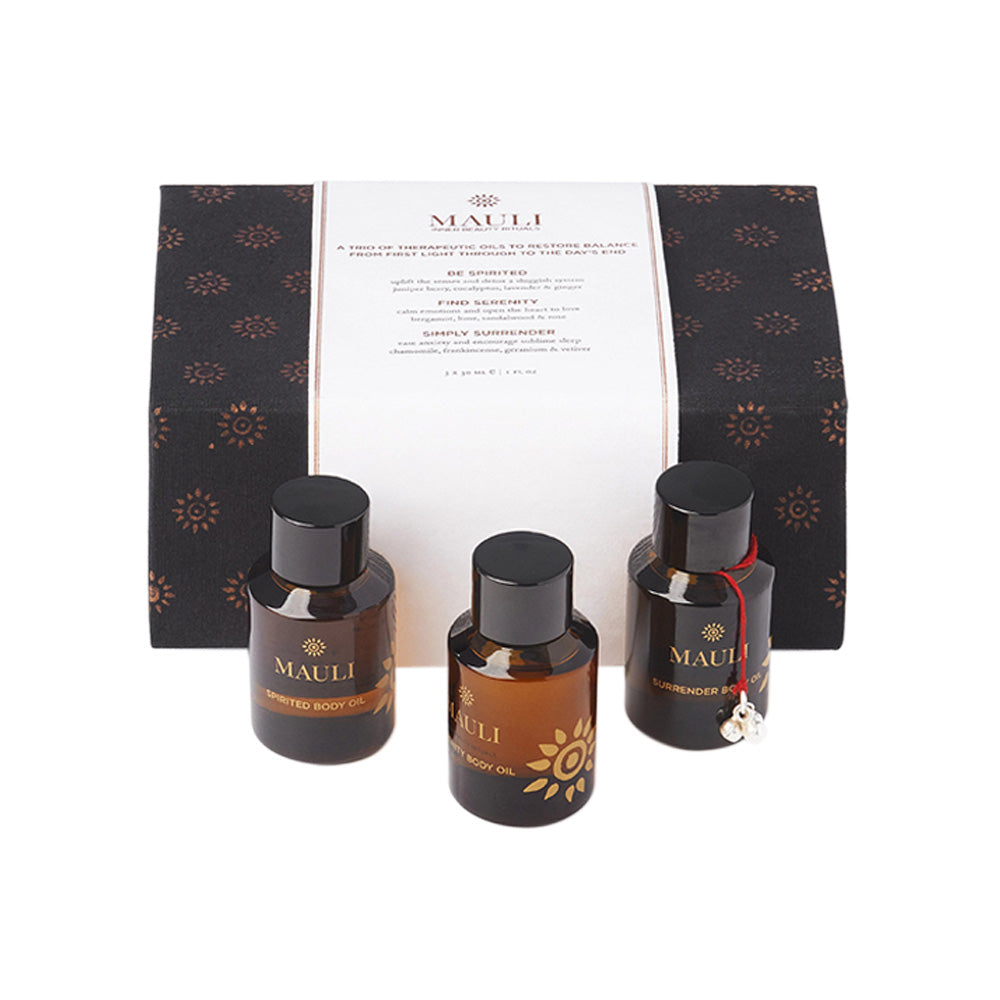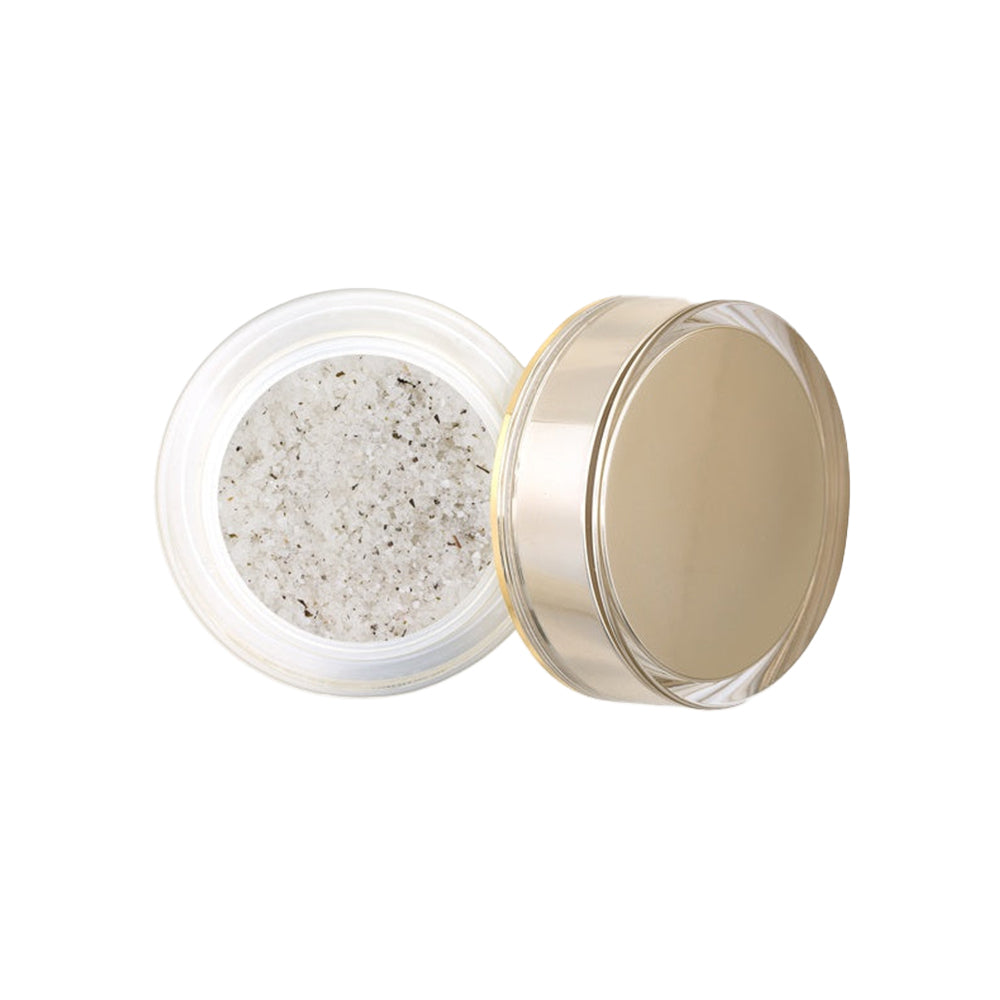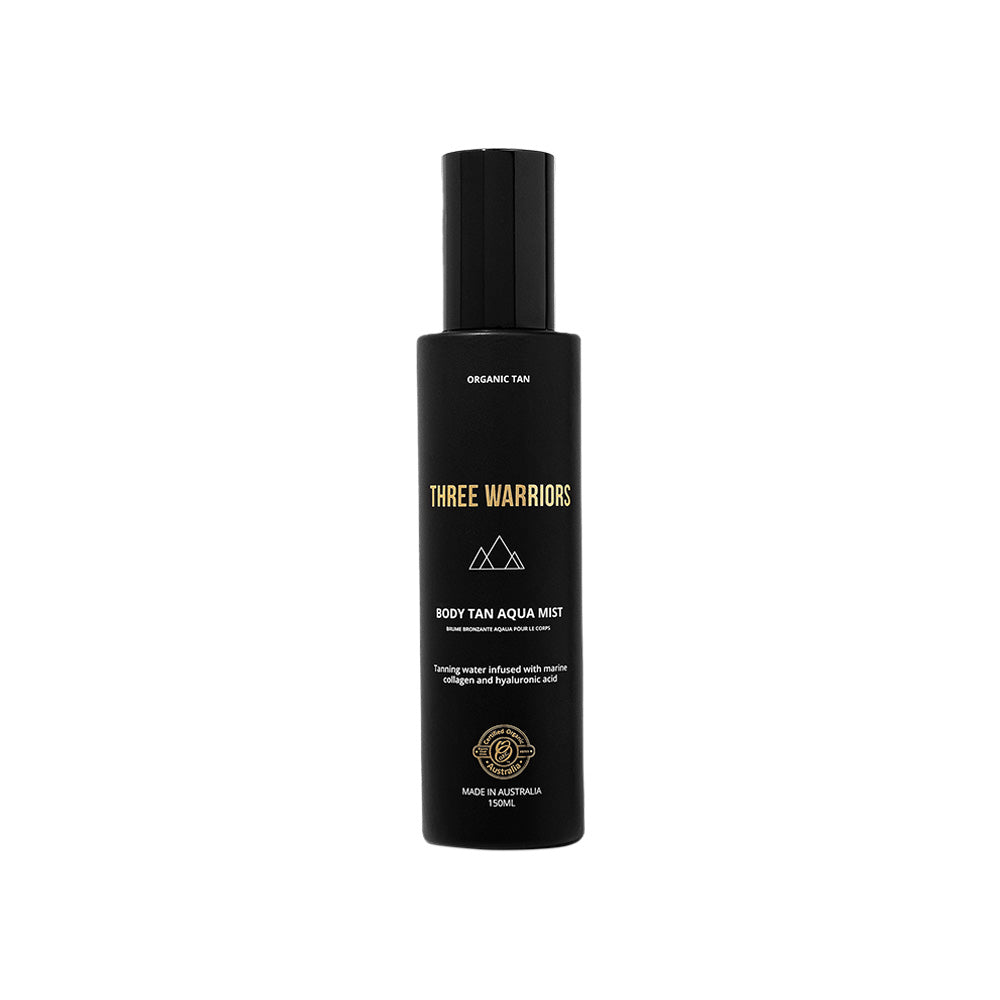A Beginner’s Guide To Ayurveda
Considered to be one of the oldest healing sciences by scholars, celebrities and wellness influencers alike, Ayurveda promises to provide inner balance & energy by focusing on the fundamentals of your unique body type – your Dosha to be exact! The use of specific nutrition, body techniques & exercise will help your energy start to flow in the right direction.

#1
Ayurveda is an ancient holistic healing philosophy to improve your health and wellbeing with a focus on prevention through the balance of your body’s natural constitution (or “Prakriti”). Translated as “the science of life”, the Ayurvedic concept is that we are at one with nature and our environment, and our habits and lifestyle should reflect this.
Your Prakriti (translating as “nature” or “source”) is established at birth, affects the way you function, and determines your physical and psychological characteristics. Although your Prakriti never changes, it is constantly influenced by fluxes of various internal and external factors that can cause imbalances – from the environment, to seasonal changes, exercise, diet, lifestyle choices, community, surroundings, and more.
The Ayurvedic way of life is to consistently re-balance our mind, body, and spirit to prevent injury, illness, and disease through a “lifestyle medicine”. Yoga, anyone?
THE 3 DOSHAS: VATA, PITTA & KAPHA
According to Ayurveda, our Prakriti (translated as ‘nature or ‘source’) is made up of individual ‘Doshas' (or body types) identified with their Sanskrit names: Vata, Pitta, and Kapha. According to Ayurveda, we all have a dominant Dosha whose characteristics we tend to display, but we can be a combination of two.
Our leading Dosha impacts the way we look, act, sleep, eat, exercise, and feel emotionally and physically. By being aware of our unique Prakriti, we can actively balance out our natural Dosha to create an equilibrium through our lifestyle choices so that we are operating at our most optimal state, leading to a flourishing, longer life with reduced stress, increased energy, and less pain, injury, illness, and disease.
During our life, and even throughout each day, our Doshas can become imbalanced resulting in emotional or physical stress from rashes and breakouts to poor mental health, injury, colds, and flu, to obesity and heart problems. Ayurveda suggests that any ill-health or disease we experience can be directly influenced by how we take care of ourselves from sleep to nutrition and self-care.
The three Doshas are present in everybody in varying amounts and represent different functions in our bodies, but can you identify yourself in the descriptions of the three Doshas below to determine your Ayurvedic Prakriti?
1. VATA
Vata combines two elements: air and space. People who are more ‘Vata’ are usually slim with bony limbs, and straight body shapes. They tend to gain weight in the middle, have fine or dry skin, feel the cold, and have difficulty sweating. They might have an irregular or erratic appetite.
Vatas tend to be high-energy, creative, enthusiastic, alert, active and can be restless as their mind jumps from one thing to the next. Vatas are great idea-generators, social butterflies, and mood-lifters. On an imbalanced day, Vatas might find it difficult to relax or focus, feel frazzled, stressed, burnt-out, or suffer from insomnia, poor circulation, or constipation.
To balance this, Vatas should make time for self-care and seek warmth, stillness, and grounding. Eating at regular times and going to bed at the same time each night can also help to create harmony. Vata types tend to be spiritually connected and quick-learners with a penchant for nature and the outdoors.
If you recognize yourself as a Vata, feel more grounded with foods that are heavy, moist, sticky, warm, stable, salty, and sour like soups, stews, and curries.
2. PITTA
Pitta is made up of fire and water. Pitta types tend to be of medium build, with a strong, athletic figure, and can tend to gain weight on the bottom half. They tend to get warm easily, have a strong appetite, lustrous skin, and good metabolism and digestion.
A Pitta is likely to be ambitious, determined, and competitive with a strong intellect and good insight. They can be focused innovators, who like to be the center of attention and are good leaders. Although Pitta types can be nocturnal, they are prone to sleeping deeply and having vivid dreams or nightmares.
To seek balance, Pittas should choose cold, hard, bitter, dry, astringent, or sweet foods to counteract oily, sharp, fleshy, salty, and sour Pitta characteristics. On a good day, Pittas are radiant, with glowing skin, and have inner peace and happiness, but an imbalance could lead to irrationality, controlling tendencies, irritability, and breakouts or rashes. They might experience interrupted sleep, acid reflux, loose bowel movements, or headaches.
Pittas fiery nature can be balanced out by seeking solace in calm and soothing scenes during times of stress. It’s time to put your phone in airplane mode, light your candle and play some relaxing music to let go of that rushing energy.
3. KAPHA
Kaphas, made up of water and earth, usually have broad shoulders and well-developed skin, soft, oily skin, and thick hair. They usually have a slower rate of digestion and metabolism and tend to be grounded, patient, caring, compassionate, and loving to family and friends.
Kapha types love warmth, can be attached to material possessions, have an appreciation for art, music, and dance, and love to eat. To bring back the equilibrium, Kaphas should eat foods that are light, pungent, bitter, dry, clear, salty, and rough to balance out the heavy, moist, dense, oily, smooth characteristics.
Kaphas tend to be strong, stable, affectionate, reliable team players. On an imbalanced day, Kaphas can gain weight easily, be prone to sinus and respiratory problems, feel lethargic, can be groggy in the morning, and experience food cravings and depression.
To counteract stress reactions like comfort eating and hibernating, Kaphas should try to stay energized, practice letting go, and take a nature walk outside.
HOW TO PRACTICE AYURVEDA AT HOME
Now you’ve identified your Prakriti and Dosha tendencies, how can you use that information to support your health and wellbeing?
Ayurvedic practices can support a healthy heart, digestion, reduce inflammation, improve healthy sleep and wake cycles, help with weight loss, and balance energy and mood for optimum health. Consider your individual Dosha, along with nature and the environment to shape Ayurvedic practices to suit you.
1. FIND YOUR FLOW WITH YOGA
Yoga is perhaps the most well-known Ayurvedic custom that has infiltrated the western world and contemporary society. The ancient stretching and breathing practice promotes health and vitality from tapping into relaxation strategies to improve joint health and mobility – grounding for the mind and body to bring peace and flexibility.
2. FIND MOMENTS OF CALM WITH MEDITATION
Stillness is scarce in our modern existence. Meditation and mindfulness – now proven with scientific data – physically alters the brain to reduce feelings of depression and anxiety, enhances concentration and attention levels, and improves memory, learning, and cognitive function for brain-boosting power.
3. USE ESSENTIAL OILS WITH MASSAGE (‘ABHYANGA’)
Show yourself love with self-massage, or book in some aromatherapy with your favorite spa for a relaxation treatment to improve your physical health, mental health, and wellbeing. Essential oils contribute to increased blood flow, support blood circulation, and remove harmful toxins from the body. Physical touch and aromas help to decrease anxiety and low mood and increase energy.
4. CREATE A MOOD-BOOSTING MORNING ROUTINE
A peaceful, conscious start to the morning can set you up for a calming, stress-free day. Going to bed early and waking up to watch the sunrise as you prepare for your day follows the rhythm of nature and ensures you get enough restorative sleep of 7-10 hours each night to feel rejuvenated.
An Ayurvedic morning routine might consist of breathwork, meditation, yoga, and cleansing practices like tongue scraping and emptying your bowels. Ayurvedic cleansing and detoxification rituals (‘Panchakarma’) can be carried out with an Ayurvedic practitioner.
At home, sipping warm water first thing in the morning with herbs and spices is a nourishing way to detoxify and start the day with balanced energy, digestion, and mood, reducing bloating, helping you to feel happier and more alert.
5. NOURISH WITH NUTRITION
An Ayurvedic diet encourages whole foods like fruit, vegetables, legumes, and grains that contain essential nutrients, vitamins, and minerals. Move with nature’s crops to choose foods that are in season to nourish your body (and the planet.)
Where possible, choose organic, home-grown, and fresh food instead of processed food that can lack important vitamins, minerals, and fiber. Practice intuitive eating, taking your time to cook and eat without distractions, and listen to what your body needs. Eating according to your Prakriti, and at particular times of the day, can enhance your health and vitality.
6. SPRINKLE HERBS & SPICES
According to Ayurveda, food is medicine. Natural herbs and spices from the earth are widely used as part of a daily routine or ramped up in recipes with healing and protective properties during times of ill-health or stress.
Root causes of neurological diseases, pulmonary diseases, arthritis, diabetes, cancer, and cardiovascular problems often stem back to inflammation.
Anti-inflammatory turmeric balances out all Doshas. Stir into warm milk or food to protect against illness.
Sprinkles of cinnamon have anti-viral, anti-fungal, antibacterial, and anti-inflammatory properties too. It’s especially effective for improving digestion, much like ginger, that can reduce feelings of nausea, help with weight loss and support healthy cholesterol levels. Other commonly-used Ayurvedic herbs and spices are cardamom, cumin, fennel, ashwagandha, Brahmi, and Amalaki.
Modern life
Dr. Ranjan Chatterjee recently said on the Happy Place podcast, “The health landscape of most countries around the world is driven by chronic disease in many ways influenced by our collective modern lifestyle.”The health landscape of most countries around the world is driven by chronic disease in many ways influenced by our collective modern lifestyle.”
This collective modern lifestyle he speaks of is the norm in society to be highly stressed, sleep-deprived, living a sedentary lifestyle with easy access to quick, processed food that is highly addictive, whereas, in the pockets of the world where the healthiest people live, they eat fresh, local food, and have an active lifestyle with a strong sense of community.
Whilst considered a Complementary and Alternative Medicine (CAM), Ayurveda challenges the one-size-fits-all approach to health and wellbeing, and encourages us to look inwards; notice internal queues, and consider our lifestyle before seeking external input from doctors. After all, we know our bodies better than anyone.
Ayurvedic medicine has longevity too. Whilst practices can be introduced overnight, it is the consistency of these practices that leads to better, more optimum health over time. Whilst modern medicine often deals with acute problems, Ayurveda aims to prevent these problems or the severity of their symptoms from occurring in the first place.
Ayurveda can be used safely alongside other medicines, but consult your doctor before embarking on the journey, especially if you’re taking medication or treatment as it can interrupt effectiveness or cause reactions in some cases.
It takes a lifestyle change to live more consciously and see results long-term so awareness and patience are key when introducing Ayurveda into your life.
As more studies are carried out, scientific data and medical practitioners continue to reinforce the benefits of Ayurvedic medicine. With reported Ayurvedic benefits including immunity against illness and disease, protection against inflammation, radiant skin, lustrous hair, and healthy digestion, reduced stress, and higher energy levels with fewer trips to the doctor, it might be a good time to start implementing gentle Ayurvedic practices into your daily life to test out the benefits for yourself.
Love The Story, Why Not Share It?
The model featured in this story is not associated with COSME Magazine and does not endorse it or the products shown
Photography @Sjanaelise
Shop Mind & Body
Don't Miss

A Beginner’s Guide To Ayurveda
Improve your health & wellbeing with this ancient holistic healing philosophy.

A Beginner’s Guide To Ayurveda
Improve your health & wellbeing with this ancient holistic healing philosophy.

A Beginner’s Guide To Ayurveda
Improve your health & wellbeing with this ancient holistic healing philosophy.
Global Marketplace
The only dedicated global marketplace for beauty, health & wellness.
Worldwide Shipping
Worldwide shipping and returns - customs & duties taxes included.
Customer Care
Exceptional customer care & expert advice catered to you.
Loyalty Program
Unlock exciting perks by collecting Beauty Points on all of your purchases.
15% Off when you sign-up
Be the first to know! Subscribe to receive updates, access to exclusive deals, and so much more!


















